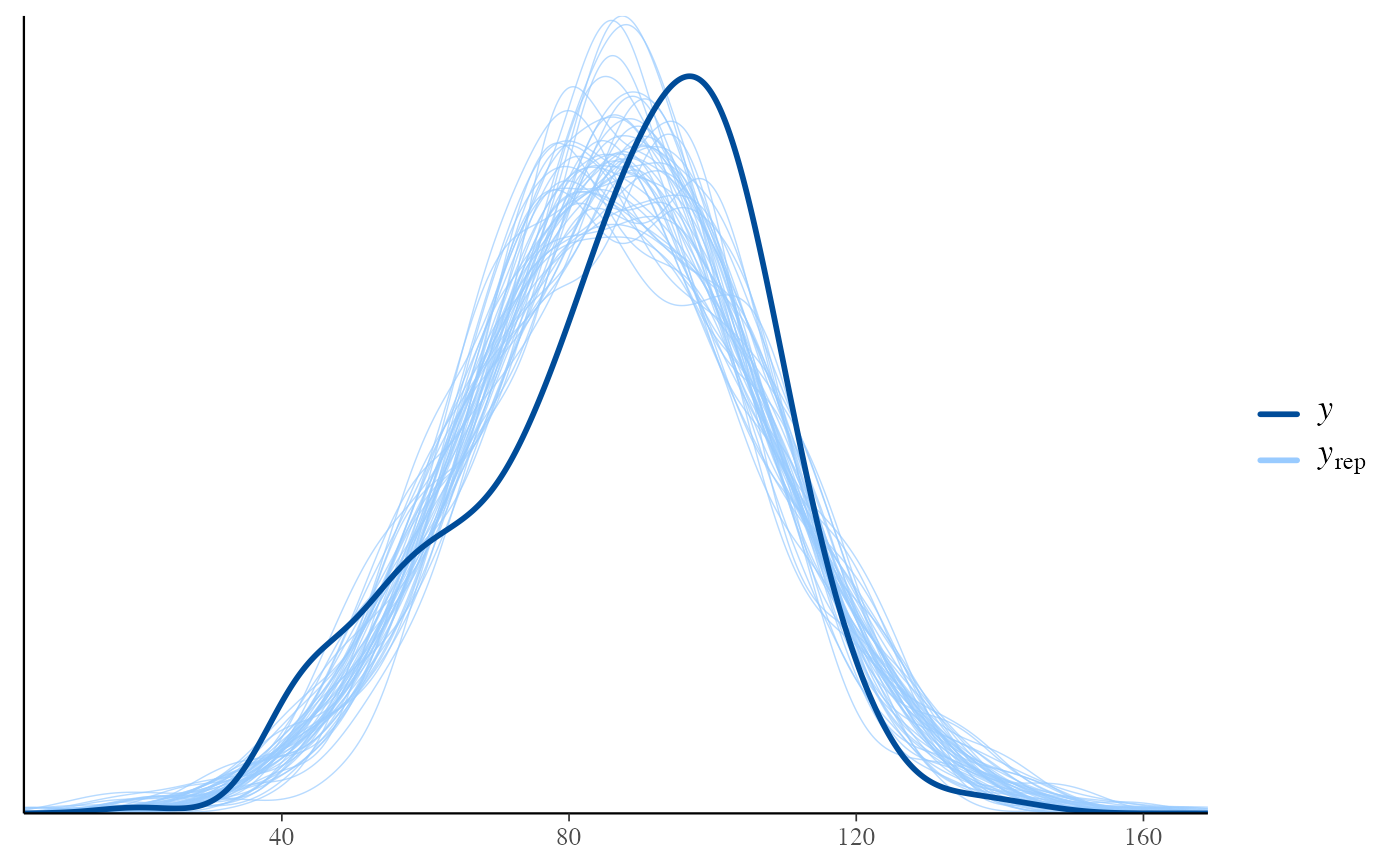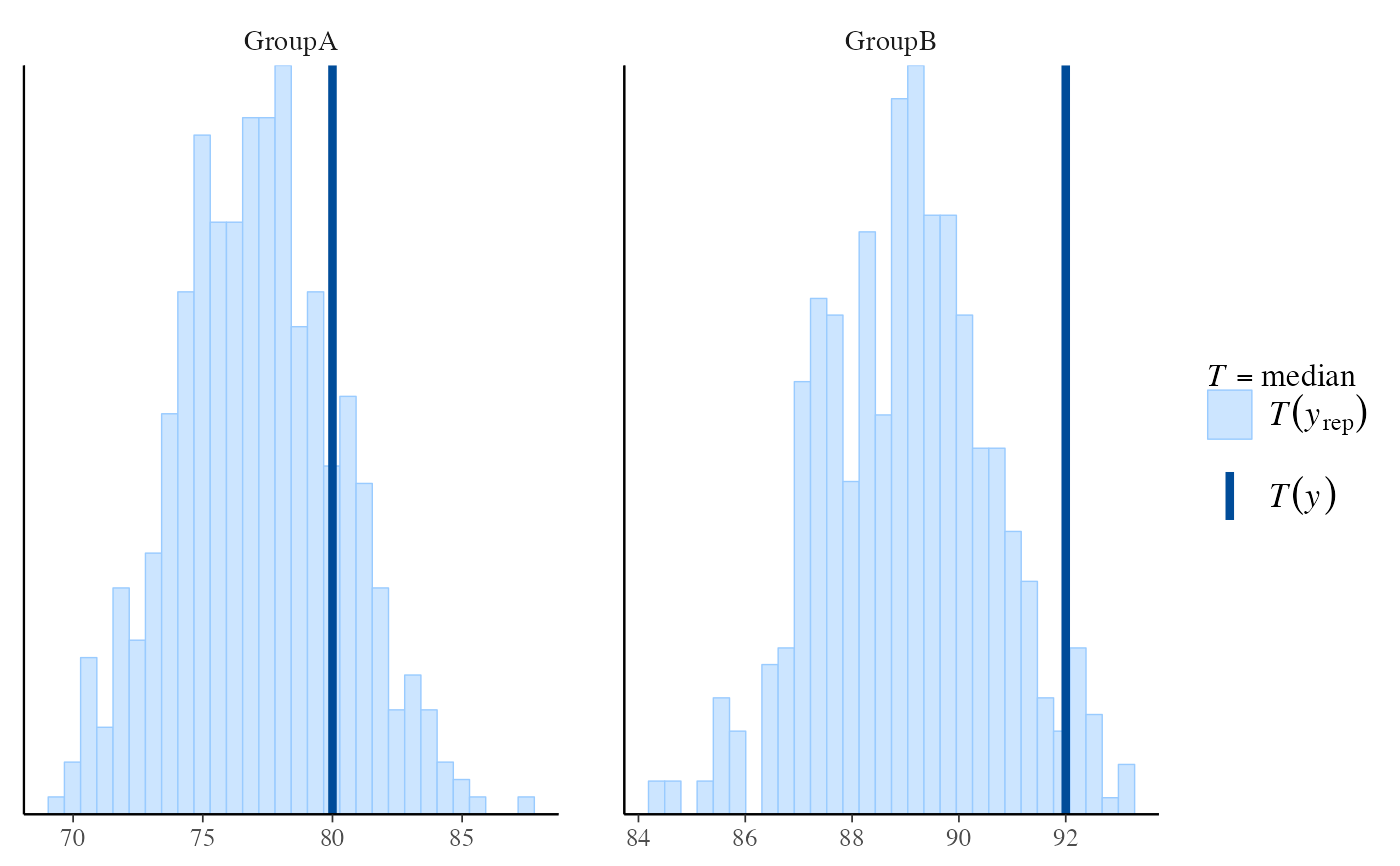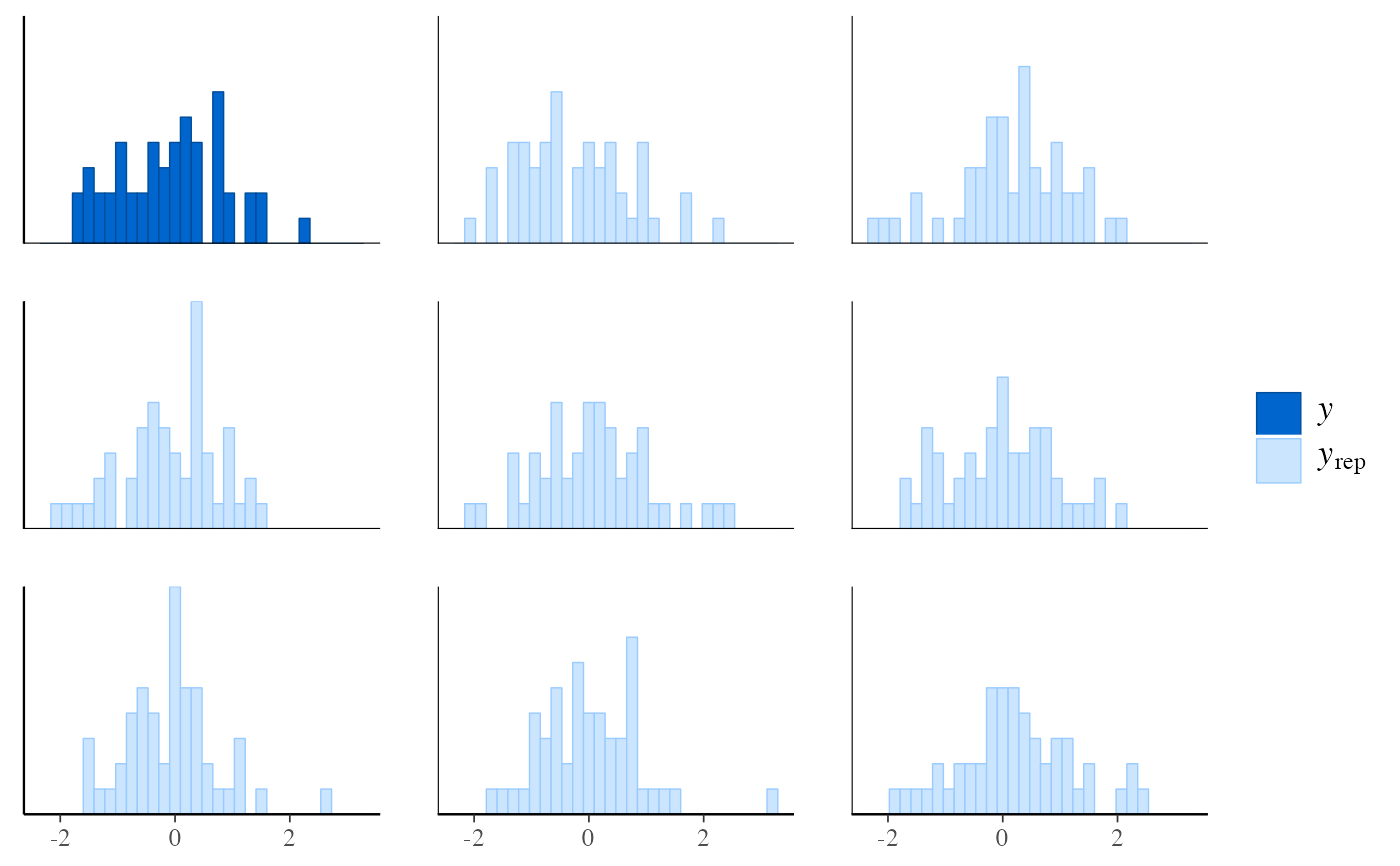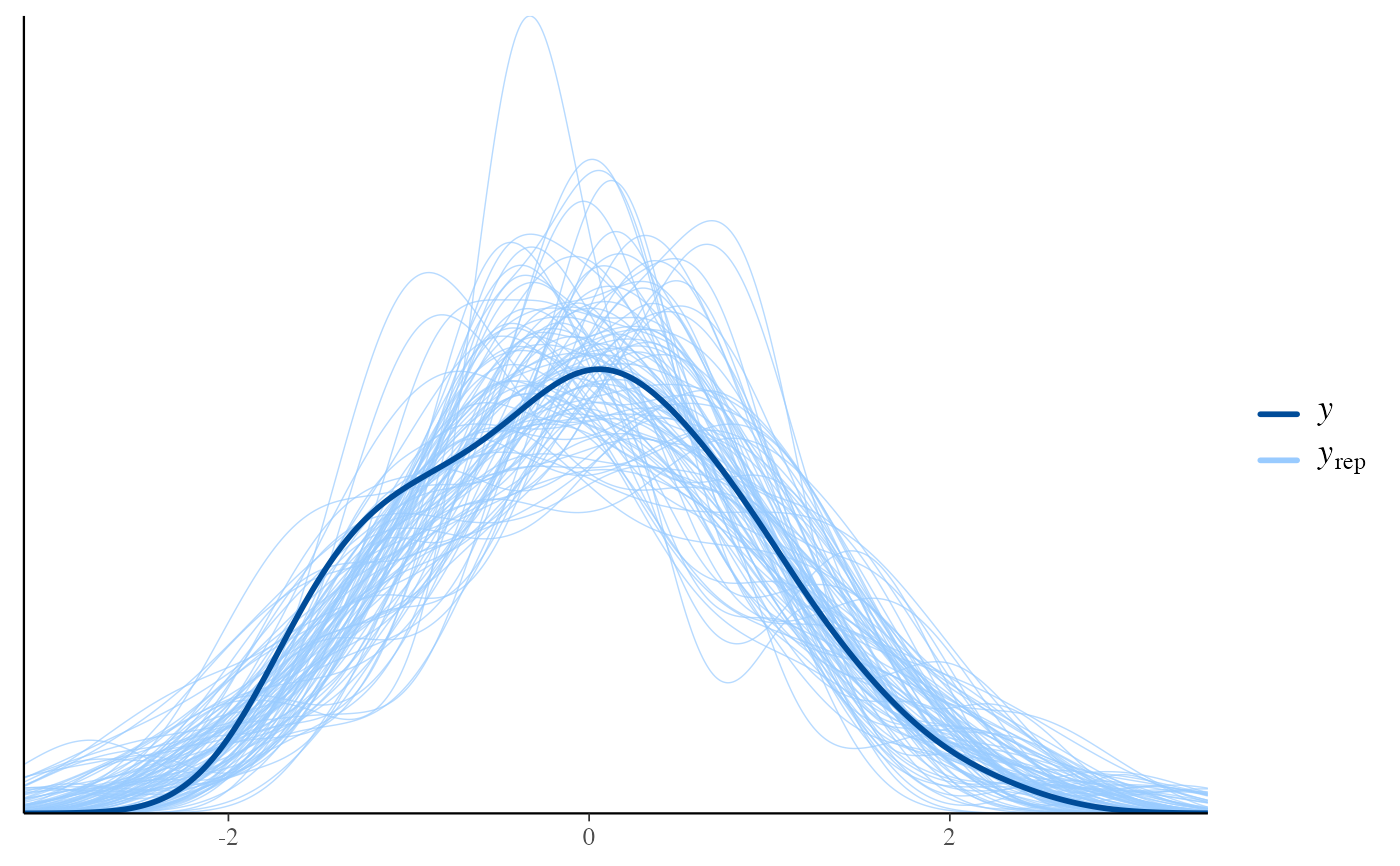Posterior (or prior) predictive checks (S3 generic and default method)
Source:R/pp_check.R
pp_check.RdS3 generic with simple default method. The intent is to provide a generic so
authors of other R packages who wish to provide interfaces to the functions
in bayesplot will be encouraged to include pp_check() methods in their
package, preserving the same naming conventions for posterior (and prior)
predictive checking across many R packages for Bayesian inference. This is
for the convenience of both users and developers. See the Details and
Examples sections, below, and the package vignettes for examples of
defining pp_check() methods.
Arguments
- object
Typically a fitted model object. The default method, however, takes
objectto be ay(outcome) vector.- ...
For the generic, arguments passed to individual methods. For the default method, these are additional arguments to pass to
fun.- yrep
For the default method, a
yrepmatrix passed tofun.- fun
For the default method, the plotting function to call. Can be any of the PPC functions. The
"ppc_"prefix can optionally be dropped iffunis specified as a string.
Value
The exact form of the value returned by pp_check() may vary by
the class of object, but for consistency we encourage authors of
methods to return the ggplot object created by one of bayesplot's
plotting functions. The default method returns the object returned by fun.
Details
A package that creates fitted model objects of class "foo"
can include a method pp_check.foo() that prepares the appropriate
inputs (y, yrep, etc.) for the bayesplot functions. The
pp_check.foo() method may, for example, let the user choose between
various plots, calling the functions from bayesplot internally as
needed. See Examples, below, and the package vignettes.
Examples
# default method
y <- example_y_data()
yrep <- example_yrep_draws()
pp_check(y, yrep[1:50,], ppc_dens_overlay)
 g <- example_group_data()
pp_check(y, yrep, fun = "stat_grouped", group = g, stat = "median")
#> `stat_bin()` using `bins = 30`. Pick better value `binwidth`.
g <- example_group_data()
pp_check(y, yrep, fun = "stat_grouped", group = g, stat = "median")
#> `stat_bin()` using `bins = 30`. Pick better value `binwidth`.
 # defining a method
x <- list(y = rnorm(50), yrep = matrix(rnorm(5000), nrow = 100, ncol = 50))
class(x) <- "foo"
pp_check.foo <- function(object, ..., type = c("multiple", "overlaid")) {
y <- object[["y"]]
yrep <- object[["yrep"]]
switch(match.arg(type),
multiple = ppc_hist(y, yrep[1:min(8, nrow(yrep)),, drop = FALSE]),
overlaid = ppc_dens_overlay(y, yrep))
}
pp_check(x)
#> `stat_bin()` using `bins = 30`. Pick better value `binwidth`.
# defining a method
x <- list(y = rnorm(50), yrep = matrix(rnorm(5000), nrow = 100, ncol = 50))
class(x) <- "foo"
pp_check.foo <- function(object, ..., type = c("multiple", "overlaid")) {
y <- object[["y"]]
yrep <- object[["yrep"]]
switch(match.arg(type),
multiple = ppc_hist(y, yrep[1:min(8, nrow(yrep)),, drop = FALSE]),
overlaid = ppc_dens_overlay(y, yrep))
}
pp_check(x)
#> `stat_bin()` using `bins = 30`. Pick better value `binwidth`.
 pp_check(x, type = "overlaid")
pp_check(x, type = "overlaid")
